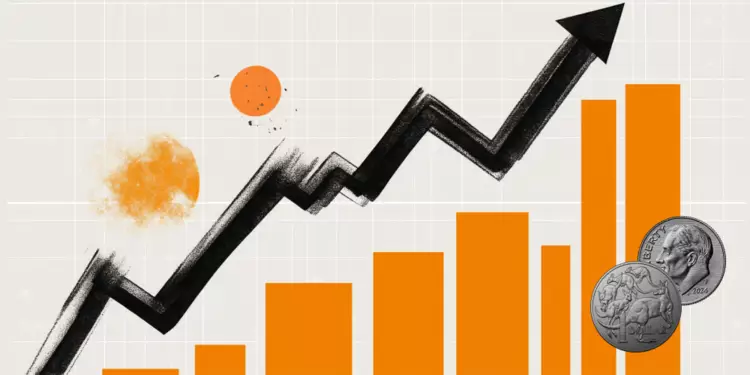The Melbourne skyline offers a striking contrast to the turbulent economic landscape impacting the Australian Dollar (AUD). Recent developments from the U.S. have triggered a complex interplay between trade policies and currency valuation. With U.S. tariffs on Chinese goods soaring to an astonishing 145%, the implications on the AUD are palpable. Trade relationships are not merely numbers on a balance sheet; they hold the potential to shift economic fortunes, especially for a country like Australia with its robust ties to China. This rise in tariffs has placed considerable pressure on investors and economists alike, fueling uncertainty and anxiety in an already volatile market.
While the Australian Dollar’s strength against the U.S. Dollar (USD) may suggest resilience, one must tread cautiously. The recent extension of gains for the AUD in the face of escalating U.S.-China trade tensions indicates a sharp divergence between market perception and underlying risk factors. The Australian currency is often viewed as a barometer for global trade sentiment, particularly in commodities. Thus, AUD appreciation in turbulent times demands scrutiny; is it to be celebrated or should it be viewed through the lens of impending adversity?
Emerging Trade Negotiations: A Silver Lining
In light of these mounting challenges, reports of Australia rekindling trade negotiations with the European Union (EU) bring a glimmer of hope. Economic interdependence with Europe could provide a counterbalance to the fragile ties with Asia, particularly China. Strengthening trade prospects with the EU could inject new vitality into the Australian economy, which is increasingly vulnerable to external shocks.
However, while trade talks garner optimism, it is essential to dive deeper into the nature of these negotiations. Will they translate into tangible economic benefits, or are they merely a strategic maneuver to compensate for losses incurred from a stunted trade relationship with the U.S.? Economic revitalization cannot be based on hope alone; it must be underpinned by solid agreements that foster mutual growth.
Impact of U.S. Economic Sentiment on the AUD
The U.S. economic outlook remains precarious, as indicated by the USD’s deterioration against a basket of major currencies. The U.S. Dollar Index (DXY) hovering around 100.30 reflects investor anxiety regarding domestic growth prospects. Inflation figures, alongside the disappointing Consumer Price Index (CPI), suggest that both the Federal Reserve and American policymakers face daunting challenges.
Traders are keenly aware that fluctuations in U.S. monetary policy directly affect the AUD. Any inclination that the Federal Reserve will embark on an aggressive rate-cutting path could further weaken the dollar. This environment is creating fertile ground for risk-on sentiment, wherein investors show a willingness to embrace higher-yield assets, including the AUD. The real question remains: how sustainable is this optimism in the long run?
Analytical Perspectives: The AUD/USD Pairing
As the AUD/USD exchange rate flirts with levels around 0.6230, technical indicators bring into focus both bullish and bearish narratives. Despite recent upticks, there’s a lurking sense of caution; the 14-day Relative Strength Index (RSI) hovering just below the pivotal 50 mark signals that bullish momentum may be short-lived. As the AUD stands precariously above the nine-day Exponential Moving Average (EMA), the immediate support level is set at 0.6176, with significant psychological levels lying below at 0.5914.
This paints a complex picture where the AUD must navigate the dual threats of international tariffs and domestic economic pressures. The possibility of further rate cuts from the Reserve Bank of Australia adds an additional layer of uncertainty. Investors should be wary of how rapidly shifting dynamics can exacerbate volatility and create abrupt shifts in investor sentiment.
The Dichotomy of Global Market Sentiment
In the broader financial context, dichotomous market sentiment poses additional challenges. On one hand, “risk-on” atmospheres buoy commodity currencies like the AUD, creating expectation for stronger performance. Conversely, “risk-off” periods reignite demand for safe-haven assets, such as the USD and gold. The fluidity of these sentiments can quickly transform investor strategies; thus, a nuanced understanding of global confidence levels is crucial for gauging AUD movement.
For the Australian economy, reliant on commodity exports, the dual challenge of rising tariffs and uncertain growth prospects leaves investors and policymakers at a crossroads. While global trade negotiations offer a potential pathway to mitigate these risks, the effectiveness of diplomatic efforts remains to be seen. What is unequivocal is the immediate need for adaptive strategies to weather the economic storm that lies ahead.

